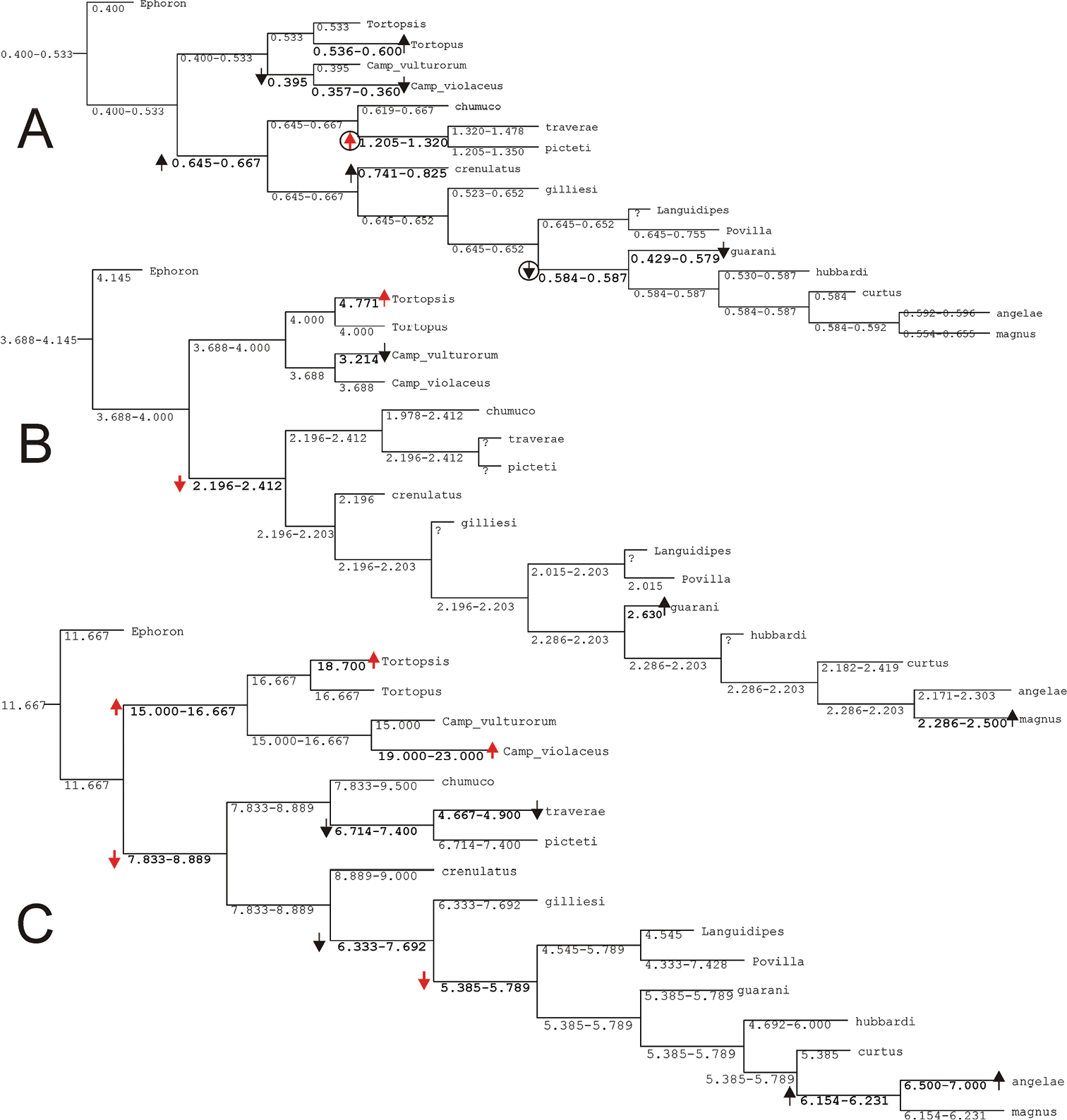
|
||
|
Optimization of selected continuous characters. A Char. 1 (1.416 steps) Ratio length second foretarsal segment/foretibia B Char. 27 (3.791 steps) Nymph, width of tusk as ratio between length of tusk (T) / width of tusk at the base (W) C Char. 13 (23.811 steps) Ratio A(total length forceps)/E(basal width). Arrows indicate increments or decrease in the characters (up and bottom directed arrows, respectively); red arrows indicate a marked change for the node. |